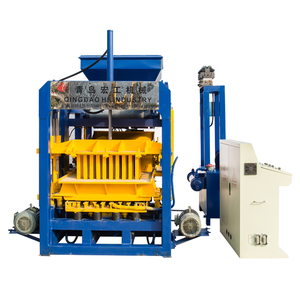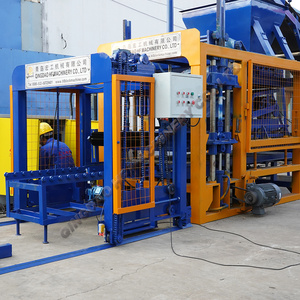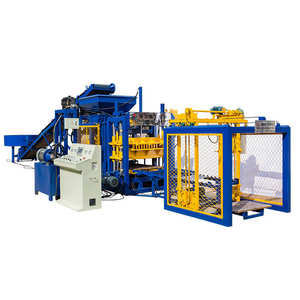
All categories
Featured selections
Trade Assurance
Buyer Central
Help Center
Get the app
Become a supplier

(1283 products available)








































The reason why cement pillar design is for modern interiors is that such pillars are made of concrete, which is a highly durable building material, ideal for anyone who wants a long-lasting and low-maintenance design. Also, concrete can be cast into any shape, allowing unique and custom pillars that can work as stunning centerpieces or subtle architectural features.
Cemented pillars are often embellished with other materials that integrate well into the modern decor. Pillars can be wrapped in wood veneer, giving them a warm, natural look without the weight as well as the cost of solid wood. The incorporation of metal accents – such as brass or steel bands – can provide a contrast to the stone’s hardness and introduce a contemporary edge to the design.
In addition, concrete can be mixed with other aggregates, such as glass fragments or colored stones, so that it appears more decorative. Glass-fiber reinforced concrete (GFRC) also allows for thinner, more intricate designs that still offer the benefits of traditional concrete.
This level of diversity in style, color, and texture makes cement pillars not only functional but also a fashionable choice for modern homes and business establishments looking to add a sophisticated design element.
Pillar design in cement has a lot of variations, each one of them providing a unique touch to the structure. From the ornate traditional pillars to contemporary minimalistic designs, the choices are many. Here are some of the common design choices for cement pillars:
Traditional Cement Pillars
They usually hold their design in arches and intricate capitals. This includes the classic Corinthian, Ionic, and Doric styles, with elaborate decorations of leaves, curves, and swirls. These traditional styles can be made from concrete to ensure durability but retain the ornate design elements typical of historical architecture.
Modern Cement Pillar Designs
Concrete pillars come in such clean lines and simple shapes that they would fit right into any modern home. Square, rectangular, or cylindrical pillars can be used, relying on the raw texture of concrete for an industrial appeal. Pillars can be painted in various neutral shades to simply complement contemporary interiors.
Geometric Cement Pillars
Concrete pillars can be cast in exciting geometric shapes and forms. Angled pillars or those with faceted surfaces introduce a dynamic look that can be very appealing inside and outside spaces. This method is famous for modern architecture, where design trends prefer bolder, more innovative design elements.
Column and Base Cap Designs
Pillars of cement can be designed with custom base and cap profiles, where the base can be simple or ornate, depending on the design needed. The cap also comes in handy since it is usually a wider piece that sits atop the pillar, helping to distribute weight in classic styles like flat slab, abacus, or crow's foot, incorporating other cement pillar design elements.
Textured Cement Pillars
Various texture techniques can be applied to cement pillars to break the monotony of a smooth surface altogether. It includes stamped patterns, rough faux finishes, or even sandblasted textures to get a touch of depth and character in the pillars. Texturing can also enhance the pillars' visual appeal by bringing tactile contrasts that get rest against the sleek finish of contemporary interiors.
Cement pillar designs can take on many different roles in different kinds of places, bridging the gap between usefulness and aesthetic attractiveness. Whether for a residential space or a commercial building, pillars play a significant role. Discussed here are typical scenarios in which pillars are designed with cement:
Residential Interiors
Pillars, in most residential spaces, are great at giving support while adding to the style. They can be used in living rooms, entryways, or open-plan areas, providing a modern-industrial look that brings out the stark beauty of raw concrete. These pillars can be used as focal design features. They also help to structure the flow of space by dividing areas without putting up a wall.
Outdoor Spaces
Cement pillars also suit outdoor applications like patios, gardens, or pools. They withstand water, hence ideal for any outdoor structure. Pillars can also be used to support overhangs, pergolas, or even gated walkways, looking like the pergola or gate designs that support the overall stylistic perspective. Decorative elements like climbing plants or lighting fixed on the pillars can make breathtaking outdoor features.
Commercial Spaces
Pillars of cement are mostly used in commercial interior spaces, such as restaurants, hotels, and retail stores, due to their attractiveness and ability to perform various tasks. They can be used to imitate industrial styles in workshops within restaurants and kitchens and work as a strong visual element in stores. Custom-printed concrete pillars also give these spaces a brand identity and familiarity.
Cultural or Historical Buildings
In these buildings, cement pillars can be designed to correlate with traditional architectural styles. They can easily be included in new buildings with designs resembling the old pillars in historical structures. In this way, a design of simple yet very strong pillar designs of cement can be used in historical as well as contemporary architecture.
While selecting a cement pillars design, various parameters such as the overall architectural theme, the purpose, and the budget come into play. Below are essential tips for choosing the right cement pillars:
Define the Purpose
This will help in choosing between a load-bearing and a non-load-bearing pillar. Load-bearing types must be designed to support a building's weight, hence should be strong. Non-load-bearing pillars are mostly decoration and can take on the simpler shapes and designs that won't interfere with the space's functionality.
Style and Aesthetic
Apart from more modern versions with clean lines, cement pillar design also allows typical cement pillars with traditional designs that are more curved and have detailed worked-up lines. Refining a specific design will depend on the existing architectural style of the structure, both internally as well as externally. Ensure the pillar design is visibly appealing and fits the overall aesthetic of the space or structure.
Cost Considerations
Cement pillars can vary in costs depending on complexity, size, and the extra details you want to add. Simpler shapes and designs will translate into lower costs compared to complex, customized work. It is also possible to reduce costs by opting for precast concrete pillars instead of cast-in-situ ones. Precast pillars are made in controlled factory environments and then transported to the site. This includes time and cost efficiency.
Durability and Maintenance
Cement is one of the highly durable materials that cement pillars are made of. Pillars, more so in high traffic areas, must be highly durable and require very little maintenance. Ensure adequate water coatings and weather treatments have been done on pillars used outside to improve integrity and reduce maintenance.
Customization and Size
Make a size decision based on the space or structure proportionally so that the pillars used do not look overly large or small. Pillars can also be customized, where engravings, textures, and geometric forms will make them stand out. Customization can be at extra costs. Therefore, a careful budget input is important when making the size and customization choice.
Cement pillars are used for both structural and ornament purposes. They support the weight of a building, provide load-bearing power, and define or separate spaces from one another. Modern-day pillars, developed with cement, provide strength and versatile design options.
Cement pillars are ideal for outdoor spaces since they can easily withstand environmental elements like moisture, sunlight, and fluctuations in temperature. They are strong, durable, and effective for structures such as pergolas, gates, and outdoor seating areas.
Yes. Cement pillars can be designed into various styles or shapes, ranging from traditional pillars with decorated capitals and bases to modern, minimalistic styles with simple straight lines to geometric forms. Concrete is easily cast into different shapes to achieve various design goals.
Pillars of cement require little maintenance as they are durable. At regular intervals, the pillars should be washed with mild soapy water and a soft brush to avoid dirt and grime from building up.
Cement pillars can be considered environment-friendly to put up if recycled aggregates are used in concrete production and also the durability of these materials guarantees long life, which lowers the life cycle of the material.